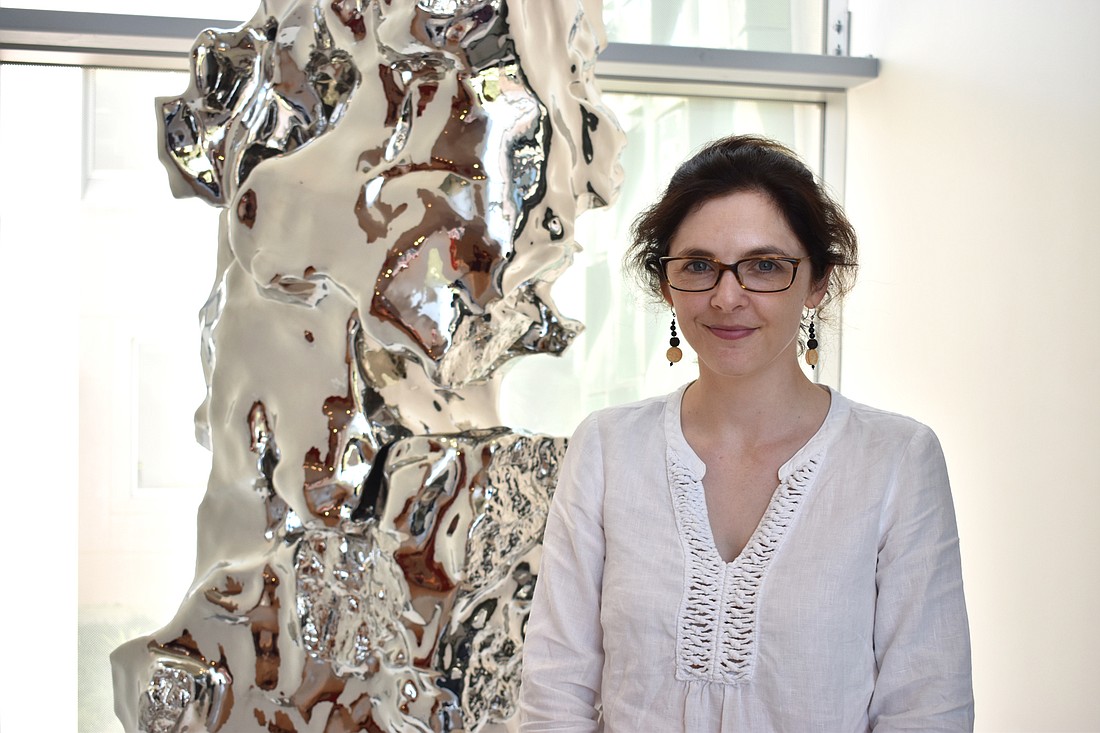- April 25, 2024
-
-
Loading

Loading

In Rhiannon Paget’s world, analyzing ancient Japanese ceramics at the St. Louis Art Museum and counting mollusks in frigid Sydney Harbor waters aren’t as unrelated as they might seem.
“It’s all kind of the same,” says Paget, assistant curator of Asian art at The Ringling. “You’re making observations about the world, you’re learning about it, you’re reading books, you’re interpreting what you see and creating models and theories based on that.”
Paget, a native of Sydney, Australia, who started in July at the John and Mable Ringling Museum of Art, studied both art history and marine ecology as an undergraduate at University of Sydney. It was during her two-year break from studies, however, when she discovered her true passion.
After obtaining a dual bachelor’s (as an honors student) in marine ecology and art history and theory, Paget began a doctoral program in marine ecology at her alma mater. However, she got “cold feet,” as she says, and found herself headed to Nagoya, Japan, to teach English.
There wasn’t anything in particular that pulled Paget toward Japan, she says, other than her desire to skip the tradition of many young Australians to spend a year in London after graduating college. She had studied Japanese for a bit in high school, and the idea of polishing her language skills and learning to live in a foreign culture enticed her enough for her to take a unique path.
“I couldn’t believe that I was getting paid to do what I was doing,” she says of her experience. “It was such a pleasure. It was great fun teaching and living over there, and I just kind of fell in love with the place.”
And with each day, her love of Japanese art grew, too.
Paget says both Japanese popular culture and government place a great emphasis on its visual arts — in fact when the country started exporting craft objects to the West during the late 19th century, that was essentially how it funded its modernization — so it was impossible not to be exposed to the visual arts while living there.
From walking through ancient temples to visiting cafes where the ceramics were handmade locally, she says art is difficult to avoid in Japan.
“It’s easy to get sucked into Japanese art while you’re living there because you’re just sort of spoiled constantly.”
She loved it so much, she stayed for two years. After, she decided to return to University of Sydney and work on a master’s in art history and theory.
But a master’s degree wasn’t enough. Paget wanted to learn more, and eventually she realized she would never have a “real” job.
“At some point I sort of decided that I wasn’t really good for anything apart from research.”
So she decided to earn her Ph.D. in modern Japanese art history from the University of Sydney, which took her back to Japan to research at Tokyo University of the Arts. After that, she landed a fellowship at the St. Louis Art Museum before looking for something more permanent. Enter The Ringling job.
Japanese prints own prime real estate in Paget’s heart, and that’s one area of The Ringling’s Asian art collection that Paget says is particularly formidable. It was this, along with the opportunity to work at a world-class museum in a state where the interest in Asian art is high, that helped pique her interest in moving to Sarasota.
Her day-to-day schedule is constantly changing, but mainly, Paget says her tasks include collaborating with other museums that could offer pieces for new exhibits, helping her exhibition designer plan the layout of rotating exhibits, and working with collectors and donors to build The Ringling’s collection of Asian art.
Paget says her goal is to leave behind a legacy of expansion within the Asian art wing.
“I’m not going to be able to create a world-class collection in my lifetime, but we can really start going in that direction.”
Paget identifies as somewhat of an introvert, so she thinks her time in Japan taught her a great deal about connecting with people — which is especially helpful in a job that on some days requires more interactions with artifacts than people.
“If you really care about people, it’s easy to talk to anyone,” she says she learned. “You can have a conversation with anyone for a half hour or 45 minutes if you really listen to them and make an earnest attempt to connect with them — that was kind of an eye opener.”
Paget may know more about Japanese art than anyone in Sarasota County (and perhaps most of Florida), but even she finds it difficult to describe the art form. What she can say for sure, however, is that it’s much more diverse than most people probably think.
“It’s not all chrysanthemums and golden screens,” she says. “Japanese art can be very beautiful and decorative. It can be very much charged with political or spiritual messages. It can be frivolous and humorous — we just received in a gift of some erotic prints, which I’m going to show the board this week, and I’m very interested to see how they respond to that.”